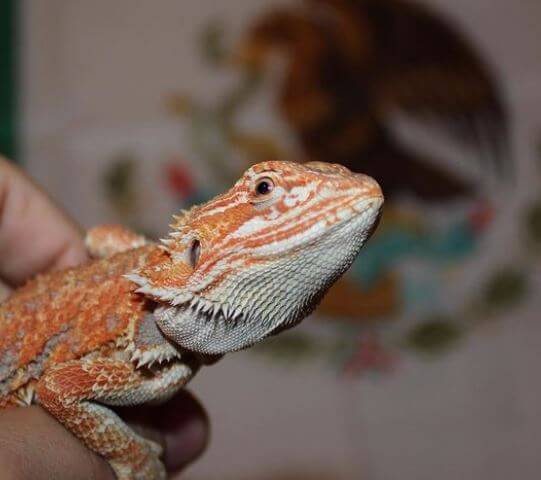Basking temp for bearded dragon
Basking temp for bearded dragon: Bearded dragons, scientifically known as Pogona vitticeps, have gained immense popularity worldwide as reptile pets. These fascinating creatures are native to the arid regions of Australia and have captured the hearts of reptile enthusiasts with their docile nature and unique appearance. With their scaly bodies, beard-like spines under their chins, and the ability to puff up or flatten themselves when threatened or interacting, they truly are captivating creatures.
Brief Overview of Bearded Dragons as Popular Reptile Pets
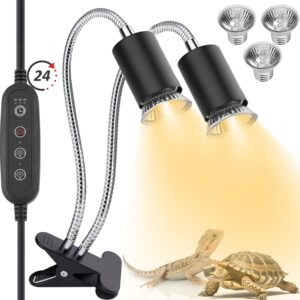 Bearded dragons have become one of the most sought-after pet reptiles for several reasons. Their manageable size, generally reaching a length of 18-24 inches (45-60 cm), makes them suitable for both beginner and experienced keepers.
Bearded dragons have become one of the most sought-after pet reptiles for several reasons. Their manageable size, generally reaching a length of 18-24 inches (45-60 cm), makes them suitable for both beginner and experienced keepers.
Furthermore, they have a relatively long lifespan compared to many other reptiles, with some individuals living up to 15 years when provided with proper care. These diurnal lizards exhibit a wide range of behaviors that make them interactive and engaging pets.
They are known for their curious nature, often observing their surroundings with seemingly inquisitive eyes. Bearded dragons also display social behavior by waving their arms or head-bobbing as a way of communication or courtship rituals.
Importance of Providing Appropriate Basking Temperature for Their Well-being
Maintaining an appropriate basking temperature is crucial for the overall health and well-being of bearded dragons. As ectothermic animals, they depend on external heat sources to regulate their body temperature effectively.
The basking spot serves as a vital component in replicating their natural habitat within captivity. The proper basking temperature not only aids in digestion but also supports metabolic processes necessary for growth and development.
It allows bearded dragons to efficiently absorb nutrients from food, which is essential for maintaining optimal health throughout their lives. Additionally, providing the correct basking temperature helps stimulate natural behaviors, including basking and thermoregulation, leading to increased activity levels and overall satisfaction for these reptilian companions.
By recognizing the significance of maintaining an appropriate basking temperature, we demonstrate our commitment to providing a conducive environment that closely resembles the natural habitat of bearded dragons. In doing so, we can ensure their physical and psychological well-being, allowing them to thrive under our care.
Description of the native environment (Australian deserts)
Bearded dragons, scientifically known as Pogona, are native to the arid regions of Australia, specifically the central and western parts of the country. The Australian deserts provide a unique habitat for these reptiles, characterized by vast expanses of sandy plains, rocky outcrops, and sparse vegetation.
These regions experience extreme temperatures, with scorching hot days and significantly cooler nights. The terrain is predominantly arid with low rainfall levels and limited water sources.
Bearded dragons have adapted to this harsh environment by developing physical characteristics that enable them to thrive in such conditions. Their rough, spiky skin helps them camouflage among rocks and sandy surfaces while providing some protection against predators.
Role of sunlight and heat in their daily activities
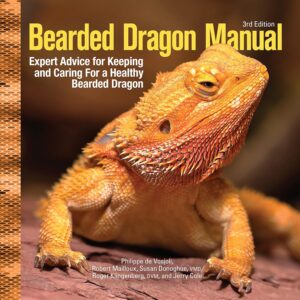 Sunlight and heat play a pivotal role in the daily lives of bearded dragons. In their natural habitat, these reptiles bask under the intense Australian sun to regulate their body temperature effectively. By exposing themselves to direct sunlight for extended periods during certain times of the day, they are able to absorb UVB rays necessary for synthesizing vitamin D3.
Sunlight and heat play a pivotal role in the daily lives of bearded dragons. In their natural habitat, these reptiles bask under the intense Australian sun to regulate their body temperature effectively. By exposing themselves to direct sunlight for extended periods during certain times of the day, they are able to absorb UVB rays necessary for synthesizing vitamin D3.
Basking allows bearded dragons to warm themselves up after cool desert nights or early mornings when temperatures drop considerably. The sun’s heat is crucial for maintaining their overall metabolism and digestion processes as well.
Additionally, exposure to sunlight helps stimulate activity levels and essential behaviors such as feeding, mating rituals, and exploring their surroundings. Bearded dragons also seek shade during peak hours when temperatures become excessively hot during the day.
They retreat into crevices or take shelter under rocks or plants where they can cool down while still being protected from potential predators overhead. (no HTML tags), understanding the native environment of bearded dragons is crucial when creating an optimal habitat for them in captivity.
Replicating elements from their natural habitat, such as the availability of appropriate temperature gradients and exposure to sunlight, is essential for their overall well-being. By providing conditions that mimic their native environment, we can ensure that these remarkable reptiles live healthy and fulfilling lives in captivity.
The Significance of Basking Temperature for Bearded Dragons
Explanation of Ectothermic Nature and its Impact on Thermoregulation
Bearded dragons, like other reptiles, are ectothermic creatures. This means that they rely on external sources of heat to regulate their body temperature.
Unlike humans and other mammals who generate their own body heat, bearded dragons absorb warmth from the environment to raise their internal temperature. This dependence on environmental heat makes basking a vital aspect of their daily lives.
Thermoregulation is the process by which bearded dragons maintain a stable internal body temperature within an optimal range. They achieve this by moving between warm and cool areas in their habitat, known as thermal gradients.
The basking spot provides them with the higher end of this gradient where they can elevate their core temperature effectively. By exposing themselves to direct heat, bearded dragons can increase their metabolic rate, enhance digestion, and boost overall physiological processes.
Benefits of Maintaining an Optimal Basking Temperature
Maintaining an optimal basking temperature is crucial for the well-being and health of bearded dragons. Sufficient exposure to appropriate temperatures ensures that various physiological functions are operating at full capacity. Here are some key benefits associated with providing a suitable basking environment:
- Digestion: Adequate heat is essential for promoting efficient digestion in bearded dragons, as it helps break down food and facilitates nutrient absorption. Insufficient warmth may lead to sluggish digestion or even digestive disorders.
- Metabolic Activity: By raising their body temperature through basking, bearded dragons enhance their metabolism, allowing them to efficiently convert food into energy. A boosted metabolic rate supports overall growth and development.
- Immune System Function: Maintaining an optimal basking temperature helps strengthen the immune system in bearded dragons. Higher temperatures stimulate immune responses that aid in combating pathogens and preventing infections.
- Psychological Well-being: Providing a comfortable and warm basking spot positively impacts the mental well-being of bearded dragons. It allows them to exhibit their natural behavior, such as basking under the sun, which can reduce stress levels and promote overall contentment.
By understanding the ectothermic nature of bearded dragons and recognizing the benefits of maintaining an optimal basking temperature, we can ensure their overall health and thriving existence in captivity. Creating a suitable environment that mimics their natural habitat is essential for the well-being of these remarkable reptiles.
Determining the Ideal Basking Temperature Range
Overview of the recommended range (95°F – 105°F or 35°C – 40°C)
When it comes to providing the optimal basking temperature for your bearded dragon, understanding the appropriate range is crucial. The recommended basking temperature falls between 95°F and 105°F (35°C – 40°C). This range closely mimics the natural conditions they experience in their native Australian deserts.
Bearded dragons are ectothermic creatures, which means their body temperature is regulated by external sources of heat. Maintaining this specific temperature range allows them to properly digest food, boost metabolism, and perform essential physiological functions.
Within this range, it is advisable to aim for a standard basking spot temperature of around 100°F (38°C). This ensures that your bearded dragon can comfortably raise its body temperature when required.
It’s important to note that these temperatures refer to the specific basking spot and not the overall ambient temperature within their enclosure. Creating a thermal gradient by providing cooler areas throughout the enclosure allows your pet reptile to move freely between warm and cooler regions as per their needs.
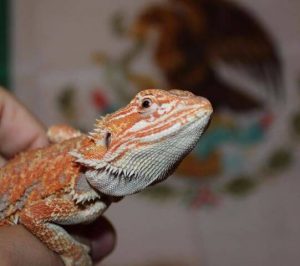
Factors influencing temperature requirements (age, health, activity level)
Basking temp for bearded dragon: Several factors influence a bearded dragon’s individualized basking temperature requirements. Firstly, age plays a significant role in determining optimal temperatures. Juvenile bearded dragons require slightly higher temperatures than adults because they have a faster metabolic rate and need extra warmth for growth and development.
As they mature, gradually reducing temperatures within the recommended range is necessary. Health considerations are also crucial in determining ideal basking temperatures for your pet reptile.
If your bearded dragon has underlying health issues or is recovering from an illness or injury, it may require slight adjustments in its basking spot’s temperatures. Consulting with a reptile veterinarian will help ensure that the temperature range provided adequately supports their recovery and overall well-being.
Activity level is another essential factor to consider. Active bearded dragons, such as those engaged in frequent exploration, hunting, or breeding, may require slightly higher basking temperatures to support their increased metabolic demands.
On the other hand, more sedentary individuals may not require temperatures at the top end of the recommended range. Observing your bearded dragon’s behavior and adjusting the basking spot temperature accordingly will help create a favorable environment for their activity levels.
By understanding the recommended temperature range and considering individual factors such as age, health, and activity level, you can provide your bearded dragon with an optimal basking spot temperature that promotes their overall comfort and well-being. Monitoring these factors regularly will ensure that your pet reptile can thrive in its captive environment.
Creating a Proper Basking Spot in the Enclosure
Selection and placement of a suitable basking lamp or heat source
One of the most crucial aspects of creating an ideal basking spot for your bearded dragon is selecting an appropriate basking lamp or heat source. It is essential to choose a bulb specifically designed for reptiles, offering both heat and light.
The most commonly used and recommended type is a halogen bulb, as it produces ample warmth without emitting excessive amounts of harmful UVB radiation. When choosing the wattage for your basking lamp, consider factors such as the size of your enclosure and the distance between the lamp and the basking spot.
A general rule of thumb is to use a 75-100 watt bulb for a standard-sized enclosure. However, it’s always best to monitor the temperatures initially and adjust accordingly to ensure that your bearded dragon’s needs are met.
Providing a gradient within the enclosure to allow for thermoregulation
 Basking temp for bearded dragon: In their natural habitat, bearded dragons have access to various temperature zones that allow them to regulate their body temperature effectively. Replicating this gradient within their enclosure is crucial for their overall well-being. Alongside the designated basking spot, you must create cooler areas where your pet can retreat when they require lower temperatures.
Basking temp for bearded dragon: In their natural habitat, bearded dragons have access to various temperature zones that allow them to regulate their body temperature effectively. Replicating this gradient within their enclosure is crucial for their overall well-being. Alongside the designated basking spot, you must create cooler areas where your pet can retreat when they require lower temperatures.
To achieve this temperature gradient, position the basking lamp at one end of the enclosure. This will establish a hot zone directly beneath it where temperatures reach their highest point.
On the opposite end, place hideouts or additional decor that provides shade and lowers temperatures. By arranging these elements properly, you create an environment that allows your bearded dragon to move freely between warm and cooler areas according to its needs.
Remember that maintaining an appropriate temperature gradient not only supports thermoregulation but also encourages natural behaviors like exploring different microclimates within their habitat, enhancing their overall physical and mental stimulation. Creating a suitable basking spot for your bearded dragon entails careful consideration of the lamp or heat source used and the layout of the enclosure.
Selecting a reptile-specific basking lamp or heat bulb ensures the provision of sufficient warmth without adverse effects. Additionally, establishing a temperature gradient within the enclosure is vital for thermoregulation.
By providing both a hot basking zone and cooler areas, you enable your bearded dragon to move around and regulate its body temperature effectively. With an optimal basking spot in place, you are one step closer to ensuring the health and happiness of your scaly companion.
Monitoring and Adjusting the Basking Temperature
Ensuring that the basking temperature is maintained within the optimal range is crucial for the health and well-being of your bearded dragon. To achieve this, it is essential to utilize various temperature monitoring tools.
The most commonly used tool is a digital thermometer with a probe placed directly in the basking area. This allows for accurate measurement of the temperature at the spot where your reptile spends a significant amount of time.
In addition to thermometers, infrared guns can also be utilized to measure surface temperatures more conveniently. These handheld devices emit infrared radiation that can detect and measure temperatures without making direct contact with objects or surfaces.
By aiming an infrared gun at different spots in the enclosure, you can quickly assess whether there are any significant variations in temperature distribution. Regular observation and assessment are paramount when it comes to maintaining consistency and accuracy in the basking temperature.
It is recommended to record daily temperatures for at least a week using either a digital thermometer or an infrared gun. Regularly reviewing these records will help identify any patterns or fluctuations that may need attention, allowing you to make necessary adjustments promptly for your bearded dragon’s comfort.
Common Mistakes to Avoid in Maintaining the Basking Temperature
Basking temp for bearded dragon: Overheating poses significant risks for bearded dragons when exposed to excessive temperatures. High temperatures can lead to heat stress, dehydration, reduced appetite, and even organ failure.
It is vital to ensure that your reptile’s basking area does not exceed the upper limit of their recommended temperature range (usually around 105°F or 40°C). Monitoring tools such as thermometers or infrared guns will help you avoid unintentional overheating by allowing you to identify any potential hotspots within their enclosure.
Conversely, underheating can also have detrimental effects on your bearded dragon’s health. Insufficient basking temperatures can result in digestive issues, sluggishness, and weakened immune function.
It is crucial to provide a warm enough basking spot to facilitate digestion and promote their overall well-being. Regular monitoring and adjusting the temperature as needed will help prevent underheating.
Seasonal Variations in Basking Temperature Requirements
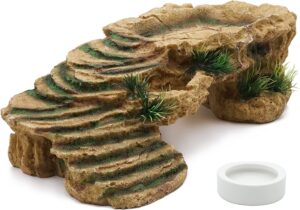 Understanding how bearded dragons’ needs change during different seasons is key to providing optimal care. In their native habitats, these reptiles experience seasonal variations in temperature and sunlight exposure.
Understanding how bearded dragons’ needs change during different seasons is key to providing optimal care. In their native habitats, these reptiles experience seasonal variations in temperature and sunlight exposure.
During warmer months, they require higher basking temperatures to maintain their metabolic functions, while lower temperatures are suitable during cooler periods. In regions with distinct seasons or colder climates, adjustments should be made to mimic the natural environmental changes that bearded dragons would experience.
For example, during winter months or cold spells, increasing the basking temperature slightly can compensate for reduced ambient heat levels. This adjustment helps ensure that your pet’s body temperature remains within a comfortable range despite external factors.
Basking temp for bearded dragon: Additional Considerations for Optimal Heat Distribution
The importance of proper heat distribution within the enclosure should not be underestimated when considering the well-being of your bearded dragon. Creating a gradient within their habitat allows them to self-regulate their body temperature by moving between warmer and cooler areas as needed. To achieve optimal heat distribution, place the basking lamp or heat source at one end of the enclosure while leaving the other end relatively cooler.
This setup allows your reptile to choose their preferred microclimate based on their comfort level at any given time. Additionally, providing appropriate hiding spots or obstacles within the enclosure can help create localized heating zones where your bearded dragon can find warmth when desired.
To sum up basking temp for bearded dragon
Maintaining an appropriate basking temperature for your bearded dragon is essential for their health and happiness. By utilizing temperature monitoring tools, regularly assessing temperature levels, and avoiding common mistakes such as overheating or underheating, you can ensure a comfortable environment for your scaly companion. Understanding the seasonal variations in basking temperature requirements and making necessary adjustments accordingly will help mimic their natural habitat, supporting their overall well-being.
Creating optimal heat distribution within the enclosure allows your bearded dragon to regulate their body temperature effectively, promoting a balanced and contented life. Remember, by providing the ideal basking temperature, you are contributing to the longevity and vitality of your beloved bearded dragon companion.
Further Reading:
- Carolina Custom Cages Terrarium Review
- 8 Best Basking Rocks for Beardie: What Is the Best Choice?
- 10 Best Thermometers for Beardie: How to Choose the Best One?
- 5 Best Beardie Lighting Setups for Beardie Lovers
- 9 Best Heat Lamps for Beardie: Natural Habitat Provided

